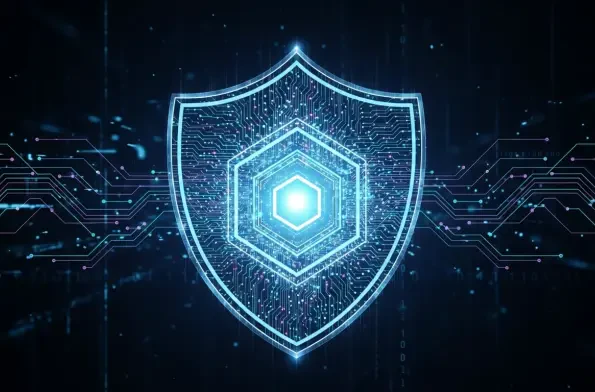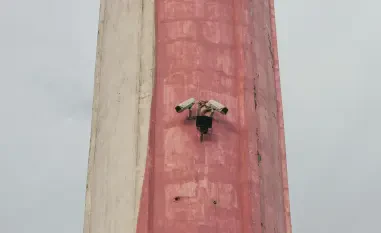Today, we’re diving into the cutting-edge world of cybersecurity with Malik Haidar, a renowned expert who has spent years safeguarding multinational corporations from sophisticated threats and hackers. With a deep background in analytics, intelligence, and security, Malik brings a unique perspective on integrating business needs with robust cybersecurity strategies. In this interview, we explore his insights on an innovative AI agent immune system designed for adaptive cybersecurity in cloud-native environments like Kubernetes. Our conversation touches on the revolutionary edge-first approach to threat detection and mitigation, the mechanics of autonomous AI agents, the alignment with zero-trust principles, and the practical implications for modern security stacks.
How did you come across the concept of an AI agent immune system for cybersecurity, and what makes it stand out in today’s threat landscape?
I’ve been working on cybersecurity challenges for years, and one recurring issue is the lag between detecting a threat and responding to it. The idea of an AI agent immune system came from observing how biological systems respond to threats—locally, autonomously, and adaptively. What makes this concept stand out is its deployment of lightweight AI agents right next to workloads in environments like Kubernetes. These agents don’t just detect anomalies; they profile, reason, and neutralize threats in real-time, cutting response times down to about 220 milliseconds. That speed, combined with low resource overhead, is a game-changer compared to traditional centralized systems that can take seconds to react—seconds that attackers exploit.
What drove the decision to focus on edge-based security rather than sticking with centralized tools like SIEM or firewalls?
Centralized tools have their place, but they often create bottlenecks. When you’re dealing with dynamic, cloud-native environments, sending telemetry to a central SIEM for analysis introduces latency—sometimes critical seconds during an attack. We wanted to eliminate that delay by empowering agents at the edge, right where the workloads live. These agents learn and act locally, using federated intelligence to stay informed without constant check-ins. This approach not only speeds up response times but also reduces the risk of a single point of failure, which is a huge concern with centralized systems under heavy load or targeted attacks.
Can you walk us through how these AI agents establish behavioral baselines for workloads in something as fluid as a Kubernetes environment?
Absolutely. In Kubernetes, workloads are constantly shifting—pods spin up and down, deployments roll out, scaling happens automatically. Our AI agents are deployed as sidecars or daemonsets alongside these microservices. They build what we call behavioral fingerprints by analyzing execution traces, system calls, API call sequences, and inter-service traffic patterns. Unlike static thresholds, these baselines adapt to the unique context of each workload, capturing not just frequency but also the structure—like timing and peer interactions. This continuous, context-aware baselining ensures that even in a highly dynamic setup, the agents know what ‘normal’ looks like for each specific workload.
When it comes to identifying a threat, how do these agents reason independently without relying on a central system for validation?
The reasoning process is built to be edge-first. When an agent spots something unusual—like a spike in high-entropy data uploads from a low-trust source—it calculates a risk score using local anomaly detection combined with federated intelligence. This means it draws on shared insights and model updates from other agents without needing raw data or a central go-ahead. The decision-making is continuous and context-driven, factoring in identity and environmental signals at every request. By avoiding round-trips to a central system, we slash latency and ensure the agent can act before a threat escalates or moves laterally.
Once a threat is confirmed, what kinds of actions do these agents take to neutralize it, and how do they avoid disrupting legitimate operations?
Once the risk crosses a context-sensitive threshold, the agent triggers immediate, least-privilege actions. This could mean quarantining a container by pausing or isolating it, rotating credentials, applying rate limits, revoking tokens, or tightening specific network policies. To prevent disruption, these actions are designed to be precise and reversible. We also map mitigations to the specific workload’s behavior and role, ensuring we don’t overreact—like isolating a critical service unnecessarily. Additionally, every action is logged with a clear rationale for audit, so if something does impact operations, it can be reviewed and adjusted quickly.
Your research highlights a decision-to-mitigation time of about 220 milliseconds. Why is this speed so critical in today’s cybersecurity challenges?
Speed is everything when you’re up against modern threats. Attackers can move laterally through a network in milliseconds, exploiting gaps before a centralized system even registers the issue. Achieving a 220-millisecond response time—about 3.4 times faster than traditional pipelines—means we can contain threats before they spread. In our Kubernetes simulations, this translated to a 70% reduction in latency compared to systems that rely on central coordination. That tight window drastically cuts down an attacker’s ability to cause damage, whether it’s data exfiltration or ransomware deployment.
How does this system support the principles of zero-trust, especially in terms of continuous verification?
Zero-trust is all about never assuming trust and verifying everything continuously. Our system embodies this by having agents evaluate identity, device posture, and context at every single request—not just at login or session start. These trust decisions happen locally at the edge, so there’s no delay from checking with a central policy evaluator. This continuous verification, paired with immediate enforcement of least-privilege controls, reduces dwell time for attackers and aligns perfectly with zero-trust’s core idea of minimizing implicit trust, especially in environments where inter-pod communication happens in milliseconds.
What challenges did you face while ensuring the system integrates smoothly with existing Kubernetes setups or API gateways?
Integration was a big focus for us because no one wants a security solution that requires a complete overhaul. In Kubernetes, our agents hook into existing telemetry sources like CNI for network flows, container runtime events for process signals, and spans from API gateways like Envoy or Nginx for request patterns. The challenge was ensuring these hooks didn’t add overhead or conflict with existing policies. We tackled this by designing the agents to be lightweight—under 10% CPU and RAM usage—and by expressing mitigations as simple, idempotent actions like network policy updates or token revocations that play nicely with current setups. It’s about augmenting, not replacing, what’s already there.
With such impressive results in simulations, how do you see this translating to real-world production environments with all their messiness?
Simulations give us a controlled view, but real-world environments are indeed messier—think noisy sidecars, multi-cluster setups, or varied networking plugins. That said, the core strength of our system—local decision-making and action—doesn’t depend on a specific topology. The latency gains should hold as long as mitigations map to available primitives in your runtime or service mesh. For production, I’d recommend starting with observe-only mode to build solid baselines, then gradually enabling low-risk actions like rate limits before moving to high-impact controls like container isolation. It’s about building confidence through staged deployment while adapting to the unique noise of each environment.
Looking ahead, what is your forecast for the role of autonomous AI agents in the future of cybersecurity?
I believe autonomous AI agents will become the backbone of cybersecurity in the next decade. As threats grow faster and more sophisticated, the old model of centralized control just won’t keep up. Agents that can learn, decide, and act at the edge—close to where threats emerge—will redefine how we protect distributed systems. We’re already seeing momentum in agentic frameworks for security tasks, and I expect this to expand into areas like automated vulnerability testing and real-time policy optimization. The future is about self-stabilizing systems that don’t just react but anticipate and adapt, minimizing human intervention while maximizing resilience.













